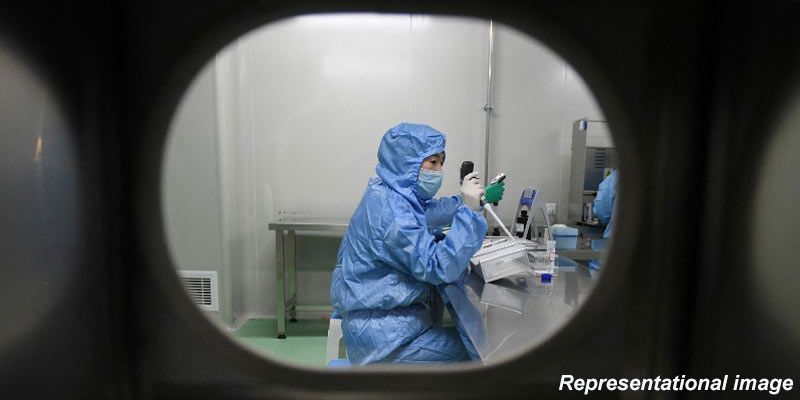- India
- Jan 06
- Kevin Savio Antony
Researchers develop injectable hydrogel for breast cancer therapy
• Researchers at Indian Institute of Technology (IIT), Guwahati have developed an advanced injectable hydrogel for localised cancer treatment with significantly less side effects typically associated with conventional cancer treatments.
• The research conducted in collaboration with Bose Institute, Kolkata, has been published in ‘Materials Horizons’, a journal of the Royal Society of Chemistry.
• Cancer continues to affect millions of patients worldwide but current treatments such as chemotherapy and surgical interventions often have severe limitations.
• Surgical removal of tumours is sometimes not feasible, particularly for internal organs, while chemotherapy’s systemic delivery often results in harmful side effects by affecting both cancerous and healthy cells.
• The researchers have addressed these challenges by designing a hydrogel that delivers drugs precisely to the tumour site, ensuring localised action.
What are hydrogels?
• Hydrogels are water-based, three-dimensional polymer networks capable of absorbing and retaining fluids. Their unique structure mimics living tissues, making them suitable for biomedical applications.
• This newly developed hydrogel acts as a stable reservoir for anti-cancer drugs and releases them in a controlled manner, responding to specific conditions in the tumour micro-environment.
How it works?
• The hydrogel, composed of ultra-short peptides — biocompatible and biodegradable building blocks of proteins — is designed to remain insoluble in biological fluids, ensuring it stays localised at the injection site.
• It responds to elevated glutathione (GSH) levels, a molecule abundant in tumour cells. Upon encountering high GSH levels, the hydrogel triggers a controlled drug release directly into the tumour, minimising its interaction with healthy tissues and reducing systemic side effects.
• This work exemplifies how scientific innovation can directly address the pressing needs of cancer treatment. The hydrogel’s unique properties allow it to work in harmony with the biological environment, offering precision where it is needed most. We are excited by its potential to transform our thoughts about localised drug delivery.
• In pre-clinical trials on a murine model of breast cancer, the hydrogel showcased remarkable efficacy.
• A single injection of the hydrogel, loaded with the chemotherapy drug Doxorubicin, resulted in a 75 per cent reduction in tumour size within 18 days. Crucially, the hydrogel remained localised at the tumour site, steadily releasing the drug over time without causing detectable side effects on other organs.
• The innovative delivery system enhances the drug’s effectiveness while reducing the required dosage, thus minimising toxicity.
Properties of Hydrogels:
• Hydrophilic: They attract and hold water due to the presence of polar groups in the polymer structure.
• Biocompatible: Hydrogels are non-toxic and non-immunogenic, making them suitable for use in medical and biological applications.
• Biodegradable: They can naturally break down in the body or environment over time without causing harm.
• Flexible: The material is soft and can adapt to different shapes and environments.
• Semi-permeable: Hydrogels can selectively allow certain substances to pass through while blocking others, which is useful for controlled drug delivery systems.
Major application areas of hydrogels:
• Biomedical and Engineering: Hydrogels have widespread applications in tissue engineering, regenerative medicine, and wound healing, where they provide hydration, drug delivery, and support for tissue regeneration.
• Wastewater Treatment: They are used for cleaning water by absorbing contaminants and pollutants.
• Soft Robotics: Hydrogels are incorporated into soft robotic systems to provide flexibility and the ability to change shape.
• Contact Lenses: They are widely used in the production of soft contact lenses due to their comfort and ability to retain moisture.
• Soil Moisture Retention: Hydrogels can be added to soil to help retain moisture, promoting better plant growth.
• Hydrogel-based Batteries and Supercapacitors: They are used in the development of energy storage devices due to their ability to conduct ions efficiently.
• Hydrogel-based Cooling Systems: They can be used in cooling devices by absorbing heat and releasing it slowly, helping regulate temperature.
(The author is a trainer for Civil Services aspirants.)

